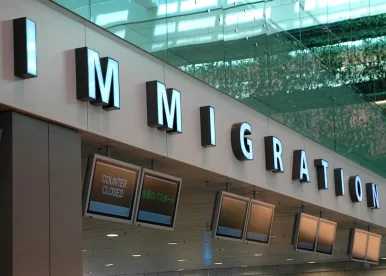In announcing the suspension of biometrics fees for EB-5 applicants last week, U.S. Citizenship and Immigration Services issued data about the number of I-526E and I-526 Petitions filed since September 2022. The announcement stated that 980 petitions had been submitted to USCIS since the reauthorization of the EB-5 regional center program, representing approximately $784,000,000 in EB-5 financing and signaling that the program is once again a popular source of financing for commercial real estate projects and a viable path to a green card for individuals wishing to seek residency in the United States.
The EB-5 program is a U.S. immigrant visa program established in 1990 to stimulate the economy and create jobs by encouraging foreign investment in U.S. businesses. The program allows foreign investors to obtain a green card for themselves and their immediate family members by investing in U.S.-based businesses. To qualify for the program, investors must invest into a U.S. business that will create or preserve at least 10 full-time jobs for U.S. workers. The investment amount is $1,050,000 or $800,000 if the business is located in a rural or high unemployment area known as a “TEA” (targeted employment area), or if the EB-5 project is an infrastructure project sponsored by a governmental entity. The program is popular because it is one of the few paths to U.S. permanent residency that allows self-sponsorship. As many European Golden Visa programs close their doors to new applicants, U.S. green card applications are surging.
The majority of EB-5 investments are made into real estate projects, which can range from commercial properties to residential developments. Real estate developers often use EB-5 financing to fund a portion of their project costs, with the remaining capital typically raised through traditional financing methods such as bank loans, private equity, and mezzanine financing.
EB-5 financing gained popularity as a low-cost source of capital for real estate developers. The interest rate on EB-5 financing is typically lower than other financing options, such as mezzanine financing, making it an attractive option for developers looking to reduce their borrowing costs.
EB-5 financing also offers longer repayment terms than traditional financing options, with terms ranging from five to seven years. This longer repayment period allows developers to defer repayment until the project is completed and generating revenue, reducing the pressure on cash flow during the construction phase. Moreover, EB-5 financing is a flexible financing option that can be structured to meet the needs of individual projects. Developers can customize the terms of the financing, including the interest rate, repayment terms, and collateral requirements, to suit their specific project requirements.
The EB-5 program was suspended for a portion of 2021-2022 while Congress worked out Program improvements and enhancements to increase investor confidence and combat fraud. In doing so, they also created new priority project categories to attract investments from nationals of countries such as China and India. The creation of the priority categories for rural, infrastructure, and TEA projects account for the current heightened interest in the program. If 980 applications are submitted at the lower $800,000 investment threshold, that would represent at least $784,000,000 raised in EB-5 capital in the last six months – but it is possible additional capital was raised. This is a boon to real estate developers looking for capital in a volatile market and amid increasing interest rates.



 />i
/>i
